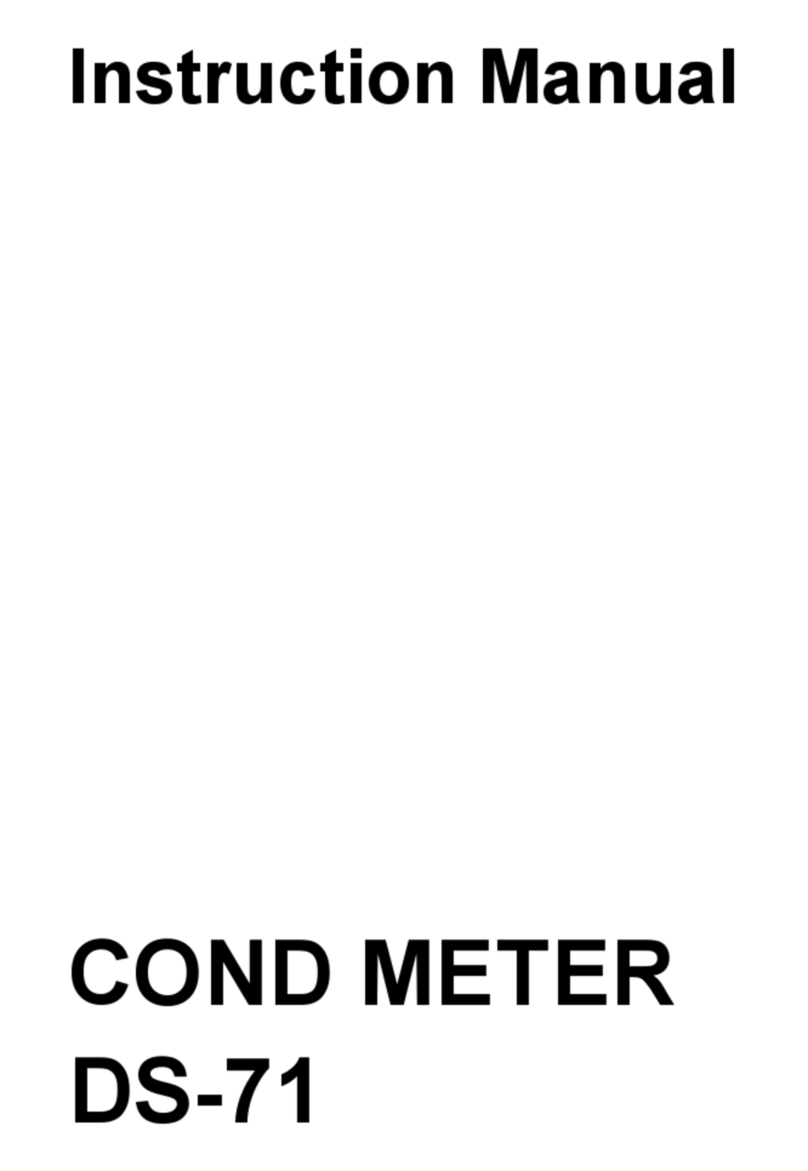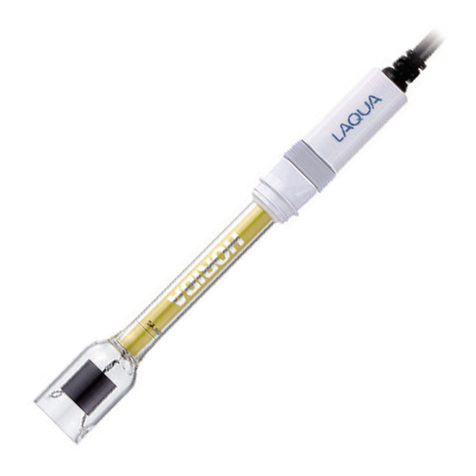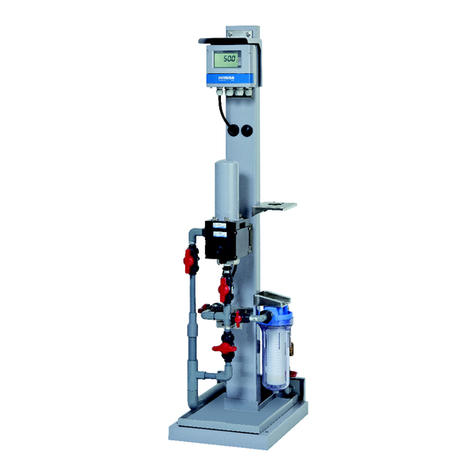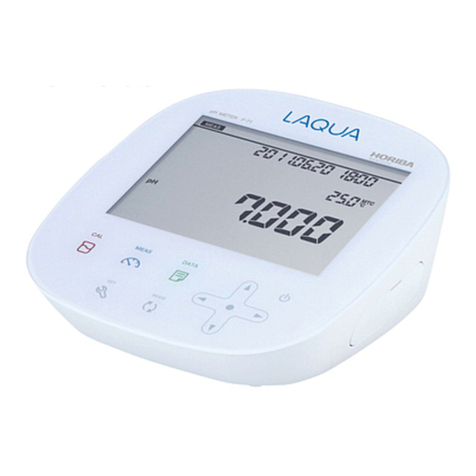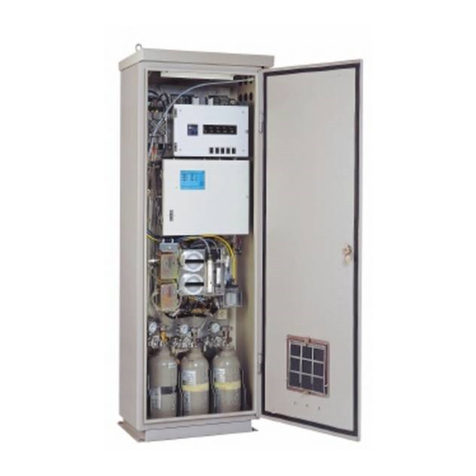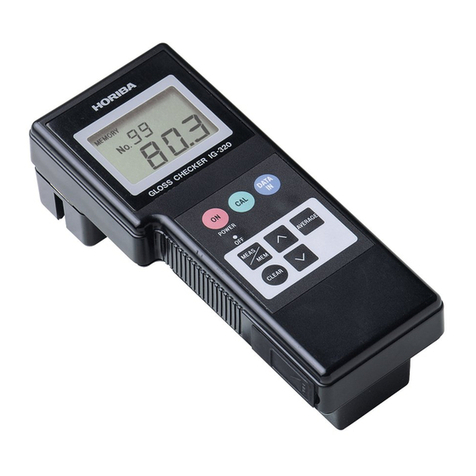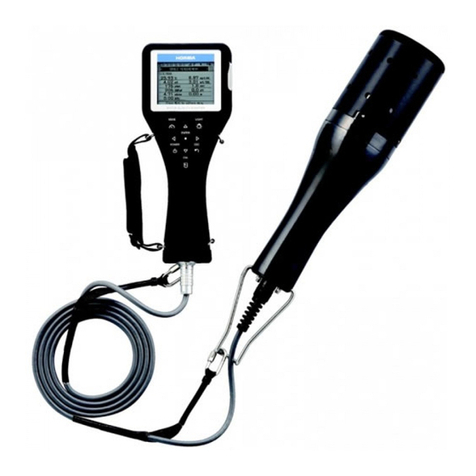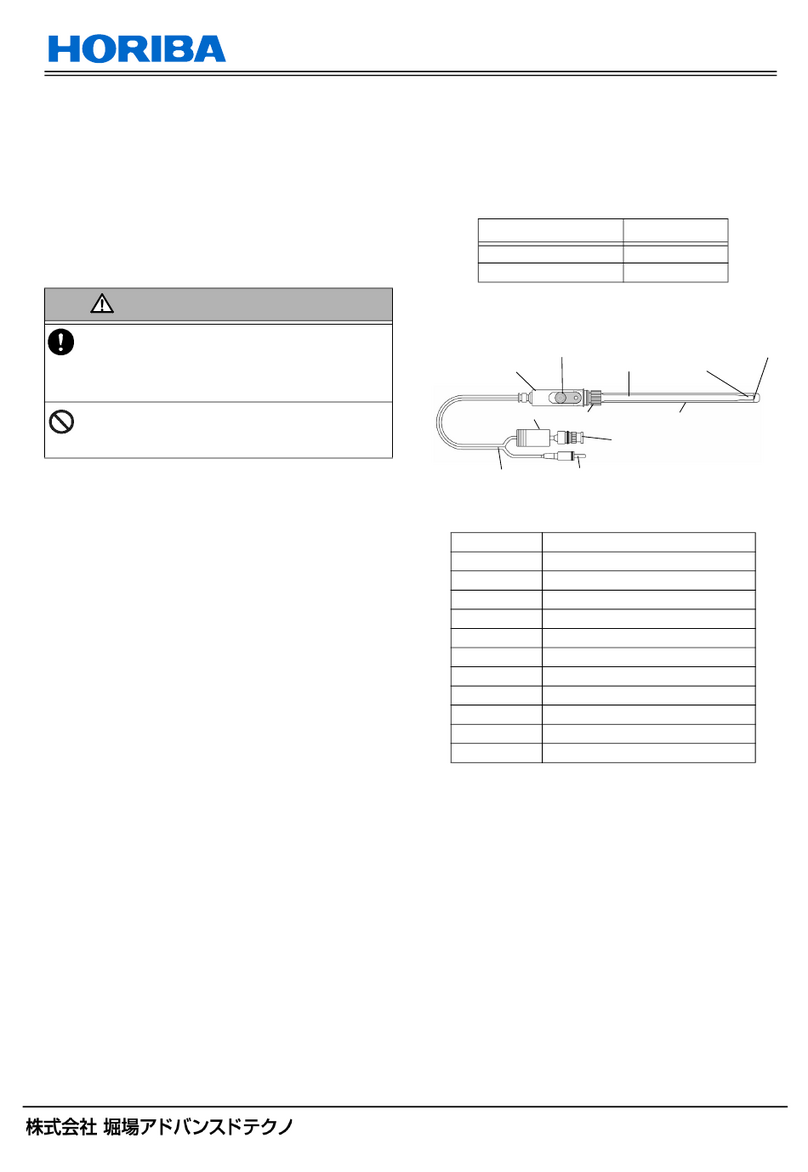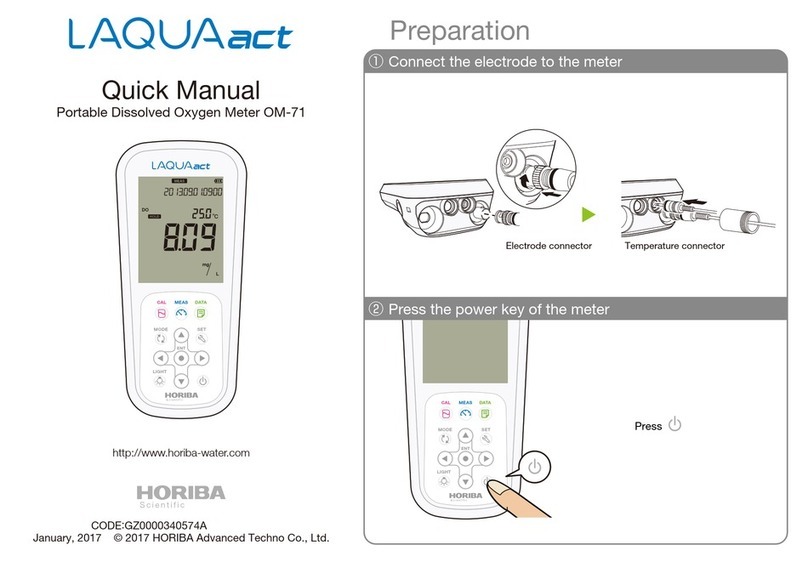
For any questions regarding this product, please contact your local agency,
or inquire from the following website.
http://global.horiba.com/contact_e/index.htm
http://www.horiba-adt.jp
31, Miyanonishi-cho, Kisshoin Minami-ku, Kyoto, 601-8306, Japan
CODE:3200585425GZ0000387890A
January, 2017
© 2017 HORIBA Advanced Techno Co., Ltd.
pH Electrode
9681S-10D Instruction Manual
This manual describes the operation of the pH electrode,
9681S-10D. Be sure to read this manual carefully, before
using the electrode.
This is the English translation of an original Japanese
document.
Conformable standards
Authorised representative in EU
HORIBA UK Limited
2 Dalston Gardens, Stanmore, Middx HA7 1BQ, UK
Caution on use
Safety Precautions
Points of concern
Do not shock the electrode.
Do not measure chapped or cracked electrode. Replace
such electrode with a new one.
Do not allow the connector to come in contact with water
or unclean hands. If not, accurate measurement cannot
be performed.
Always use the 3.33 mol/L-KCl solution (model 300)
internal solution for reference electrode.
If the responsive glass membrane or liquid junction is
very dirty and cannot be washed clean using pure water
(or deionized water), clean it depending on dirt
condition. (Refer to "Maintenance" (page 3).)
Do not use this electrode at acidic or alkaline
concentrations above 0.1 mol/L. Using the electrode
under these conditions may harm performance and
shorten the life of the electrode.
Do not measure the solutions which contain hydrofluoric
acid, which may corrode the glass.
Do not suddenly immerse the electrode in samples
where the temperature variation is 50C or more.
Silver chloride can be detected inside the responsive
glass membrane. However, it will not cause any
performance problem.
Do not use the electrode in any place where usable
temperature is out of the specified range.
White crystal can adhere to the internal solution filler
port or protective cap after storage of the electrode.
However, it will not cause any performance problem.
If the sleeve of the liquid junction is stuck with
crystallized internal solution, immerse the sleeve in hot
water at 30C to 40C to dissolve the crystal, and then
This equipment conforms to the following standards:
RoHS: EN50581
9. Monitoring and control instruments
Chemical solution
The internal solution in the electrode uses potassium chloride
(3.33 mol/L-KCI). If the internal material comes in contact with the
hands or skin, wash immediately with water. If the internal solution
comes in contact with the eyes, flush with a large amount of
running water, then seek medical advice.
Glass fragments
Glass fragments can cause injury.
The outer tube and tip of the electrode are made from glass.
Be careful not to break them.
move the sleeve carefully to check the internal solution
discharges. (Use of the ultrasonic cleaner is effective.)
Push down the sleeve lightly. If it is pushed down
strongly, potential difference between liquid may be
greater and may cause error of measurement.
Packaged contents
Specifications and parts description
Part name
Specifications
Name Q’ty
Electrode 9681S-10D 1 pc
Instruction manual (this book) 1 booklet
Temp. connectorLead
Electrode connector
Connector cover Protective cap
Cap
Responsive glass
membrane
Internal solution
filler port (Slide cap)
Liquid
junction
Stem
Electrode model 9681S-10D
Measurement range pH 0 to 14
Usable temperature range 0C to 60C
Storage temperature range 0C to 50C
Internal electrode Silver/silver chloride
Reference electrode internal
solution 3.33 mol/L-KCl solution (model 300)
Liquid junction Sleeve
Liquid junction material Glass
Wetted material Glass
Electrode length 151 mm
Ext. diam. of wetted part 12 mm
Liquid junction height Approximately 26 mm (from the tip of
electrode)
Lead length 1 m




